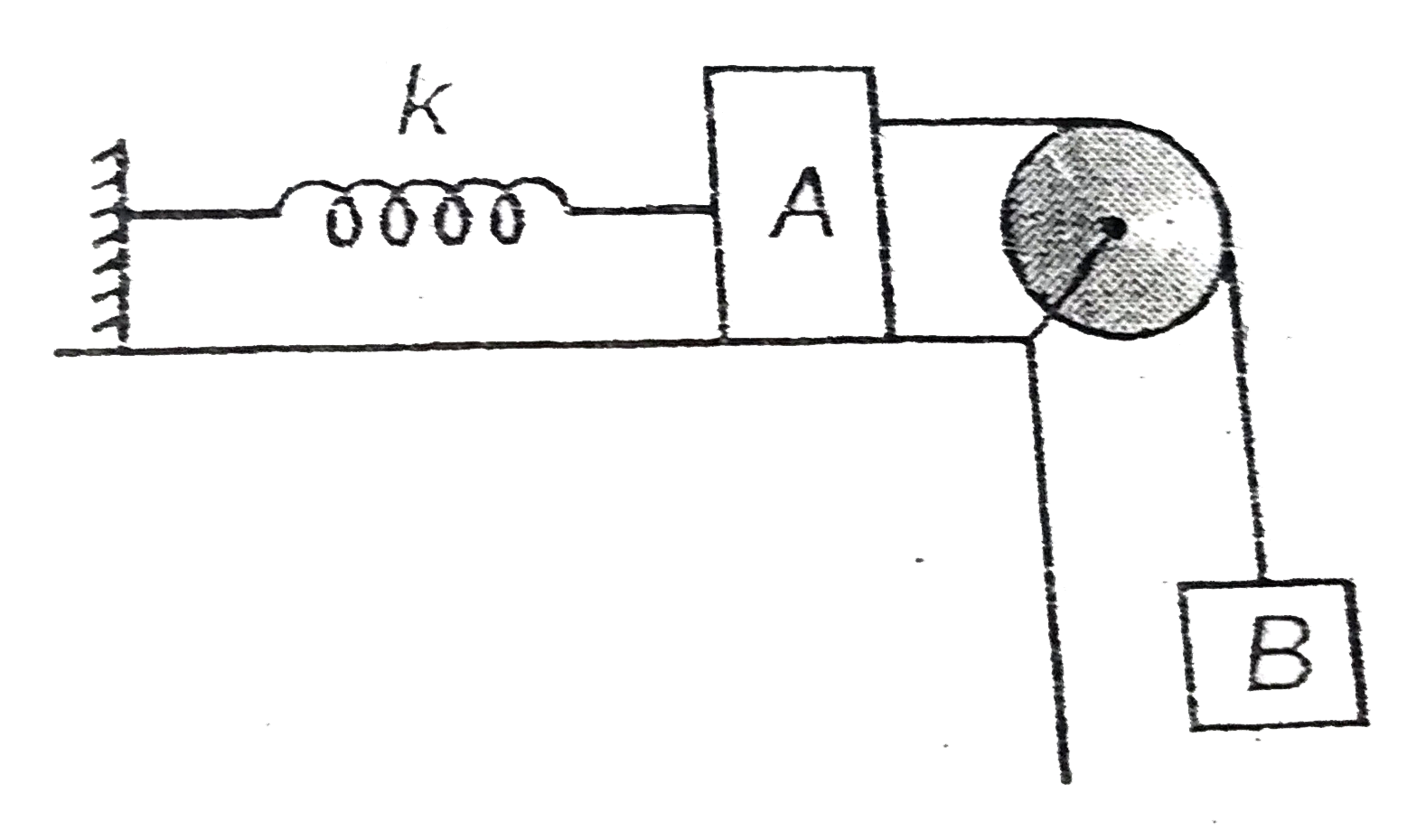In the situations shown in the figure surfaces are frictionless. Find the maximum extension of the springs if blocks are initially at rest and springs are initially in natural lengths.

The correct Answer is:(A) → (s), (B) → (s), (C) → (q), (D) → (r)
Step by step video & image solution for In the situations shown in the figure surfaces are frictionless. Find the maximum extension of the springs if blocks are initially at rest and springs are initially in natural lengths. by Physics experts to help you in doubts & scoring excellent marks in Class 12 exams.
Updated on:21/07/2023Similar Questions
Find the maximum tension in the spring if initially spring at its natural length when block is released from rest.

View SolutionConsider the condition shown in the figure. Pulley is massless and frictionless, springs are massless. Both the blocks are released with the springs in their natural lengths. Choose the correct options.

View SolutionIn the situation shown in figure all contact surfaces are smooth. The force constant of the spring is K. Two forces F are applied as shown. The maximum elongation produced in the spring is how many times of F/K (initially the spring is relaxed)?

View SolutionAssertion: Two blocks A and B are connected at the two ends of an ideal spring as shwon in figure. Initially, spring was released. Now block B is pressed. Linear momentum of the system will not remain constan till the spring reaches its initial natural length.

Reason: An external force will act from the wall on block A.
View SolutionA block of mass m collides with another block of mass 3m completely inelastically as shown in figure. What is the maximum value of v( in m/s) for which the block B does not move. Assume that initially spring is in natural length and blocks A and B are at rest. (K/m=100S.I.unit )

View SolutionA block of mass M is kept on a smooth surface and touches the two springs as shown in the figure but not attached to the springs. Initially springs are in their natural length. Now, the block is shifted (l0/2) from the given position in such a way that it compresses a spring and released. The time - period of oscillation of mass will be

View SolutionConsider the situation shown in figure.

Mass of block A is m and that of blcok B is 2m. The force constant of string is k. Friction is absent everywhere. System is released from rest with the spring unstretched. Find
(a) The maximum extension of the spring xm
(b) The speed of block A when the extension in the springt is x=xm2
(c ) The net acceleration of block B when extension in the spring is x=xm4.
View SolutionIn the figure shown, there is friction between the blocks P and Q but the constact between the block Q and lower surface is frictionless. Initially the block Q with block P over it lies at x = 0, with spring at its natural length. The block Q is pulled to right and then released. As the spring -blocks system undergoes SHM with amplitude A, the block P tends to slip over Q, P is more likely to slip at

View SolutionThe system shown in the figure can move on a smooth surface. The spring is initially compressed by 6 cm and then released.

View SolutionIn the adjoining figure, block A is of mass (m) and block B is of mass 2m. The spring has force constant k. All the surfaces are smooth and the system is released form rest with spring unstretched. Find the maximum extension in the spring and acceleration of block B at time of maximum extension
 .
.
View Solution
